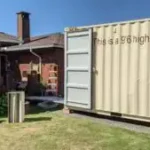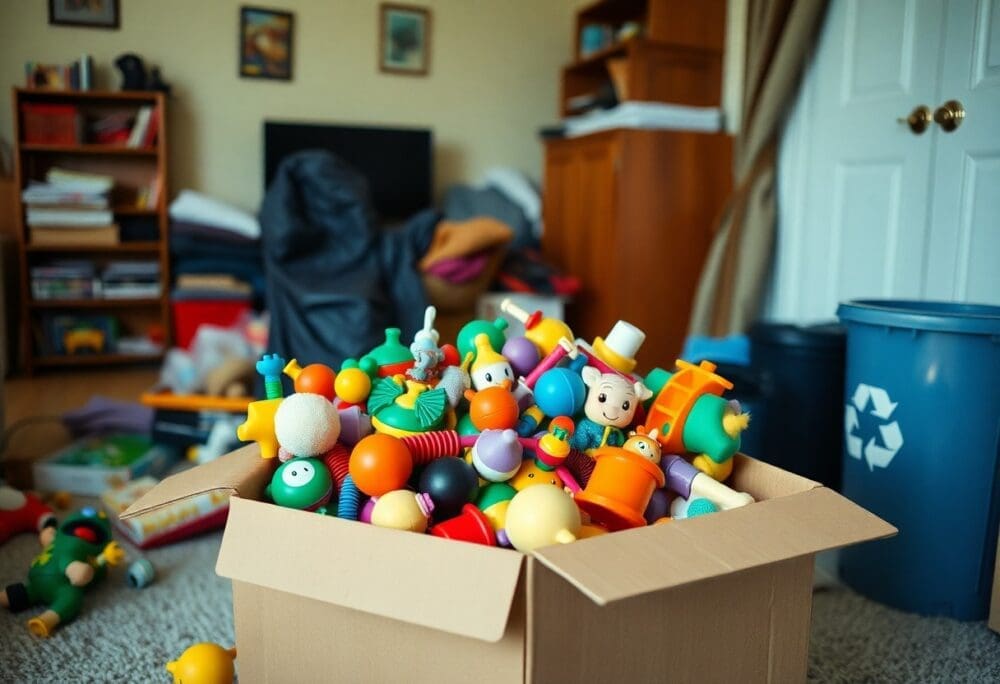Just as you begin the process of junk removal, it’s crucial to consider what to do with those unused toys cluttering your space. Instead of tossing them indiscriminately, you have several options to ensure you’re making a positive impact. From donation to recycling, understanding your choices can help you declutter responsibly while also benefiting others. This guide will provide you with effective strategies to manage those forgotten toys in a way that aligns with your values and contributes to a cleaner environment.
Key Takeaways:
- Evaluate the condition of unused toys to determine if they can be donated, recycled, or need to be disposed of responsibly.
- Organize toys into categories based on their condition and potential new homes, making the junk removal process more efficient.
- Consider involving children in the decision-making process to teach them about decluttering and the importance of giving to others.
Understanding the Emotional Attachment to Toys
Your attachment to toys can often stem from cherished memories or milestones in your life. Each toy may represent a moment of joy, comfort, or creativity, making it difficult to part with them. This emotional connection is understandable; however, recognizing this attachment is the first step in making informed decisions during the decluttering process.
The Role of Sentimental Value
Below the surface, toys often hold significant sentimental value, representing childhood experiences and personal growth. Each item can evoke nostalgia and a sense of identity, making it challenging to let go. Acknowledging this emotional weight is important, as it allows you to reflect on the positives they bring to your life while considering whether to keep or donate them.
Overcoming Attachment for Effective Decluttering
Role of overcoming attachment is key to effective decluttering. It can help you create a more organized and functional space. By evaluating each toy and the memories associated with it, you can make rational choices about what truly deserves a place in your home. Emphasizing the joy of sharing or donating can also make it easier to release items that no longer serve you.
In fact, by focusing on the benefits of letting go rather than the loss, you can shift your mindset from one of sorrow to one of empowerment. Remind yourself that passing on a toy can create new memories for another child, allowing you to cherish the moments you had while also making space for new experiences. This perspective helps alleviate the emotional burden and enables you to declutter effectively.
Evaluating the Condition of Toys
The first step in handling unused toys during junk removal is evaluating their condition. Inspect each toy for wear and tear, functionality, and safety. To learn more about responsible disposal methods, How to Dispose of Toys: Detailed Guide offers valuable insights.
Identifying Usable vs. Damaged Toys
Before deciding what to do with your toys, sort them into categories. Check for physical damage, missing parts, or any potential hazards. Keep items that are in good condition for donation or resale, while setting aside those that are beyond repair.
Repairing vs. Discarding: Making the Right Choice
To determine whether to repair or discard a toy, assess the extent of the damage and the costs involved. If a simple fix can restore a favorite item, consider investing the time and effort. However, if repairs require significant resources or safety issues are present, it may be best to let it go.
In fact, weighing the emotional value of a toy against the practicality of repairs is important. Ask yourself if the effort and cost of repairing outweigh the benefits of keeping the toy. For toys that you or your child cherish, repairing can create lasting memories, but if the item is no longer safe or usable, discarding may be the best option for your peace of mind.
Donation Options for Unused Toys
Unlike throwing your unused toys in the trash, consider donating them to brighten someone else’s day. There are numerous ways to ensure your old toys find a new home where they can be cherished and enjoyed once again. Donating toys not only helps those in need but also promotes sustainability by reducing waste.
Local Charities and Organizations
Along with national nonprofits, many local charities and organizations accept toy donations. Local shelters, schools, and community centers often welcome gently used toys, especially around holiday seasons or during community events. Your local options can connect you directly with families in your area who could benefit the most from your generosity.
Online Platforms for Toy Donation
To broaden your reach, consider using online platforms dedicated to toy donation. Websites and social media groups allow you to connect with individuals or organizations looking for toys in your community.
This approach makes it easy for you to find suitable recipients for your unused toys while encouraging a sense of community. Platforms such as Facebook Marketplace, Freecycle, and local buy-nothing groups offer opportunities to post your donation and see it go to someone who genuinely needs it. Just ensure the toys are in good condition, and you could help spread joy with just a few clicks.
Recycling and Eco-Friendly Disposal
Despite the convenience of tossing old toys in the trash, eco-friendly disposal methods offer a more responsible choice. Recycling and donating toys not only reduce landfill waste but also contribute to a more sustainable future. By choosing to recycle, you help conserve resources and minimize pollution, making a positive impact on the environment.
Understanding Toy Materials and Their Impact
Below are various toy materials that can influence their recyclability. Plastics, metals, and natural fibers all have different disposal processes. For instance, hard plastics like polyethylene are often recyclable, while softer plastics might not be accepted by recycling centers, creating challenges in proper disposal. It’s imperative to identify the materials in your toys to ensure they’re handled correctly.
Finding Recycling Programs
With the growing awareness around sustainability, many communities have established recycling programs specifically for toys. These initiatives are designed to help you properly dispose of your unused toys while ensuring they’re repurposed or recycled effectively.
EcoFriendly organizations and programs can guide you in finding appropriate recycling facilities near you. Many towns partner with charity groups, offering drop-off locations for toy donations or recycling events. Additionally, online platforms often provide resources to help locate specialized recycling centers that accept various toy materials, facilitating a responsible and eco-conscious approach to toy disposal.
Creative Repurposing Ideas
Many parents find themselves overwhelmed with unused toys, but there are creative ways to repurpose them. From transforming toy figurines into functional household items to crafting unique home decor, your old toys can find new life. Embracing creativity not only declutters your space but also values memories associated with each piece. Always consider how your artistic skills can extend the life of the toys and add a personal touch to your home.
Transforming Toys into Home Decor
On a rainy day, you can turn your forgotten toys into charming home decor pieces. For instance, paint old action figures and mount them on a shadow box as a quirky wall art display. Alternatively, create a colorful mobile using smaller toys, adding a playful touch to a nursery or playroom. With a bit of imagination, these transformations not only declutter your space but also infuse your decor with nostalgic charm.
DIY Projects for Upcycled Toys
Projects utilizing upcycled toys can be a fun and rewarding way to enhance your home and engage your creativity. Small toys can be reimagined as keychains, while larger items might become garden ornaments. Consider creating a unique coffee table centerpiece from toy cars or building a functional shelf from stacking blocks. Each DIY project not only provides a second life for your unused toys but also allows you to showcase your individuality and craft skills.
Repurposing old toys into DIY projects can also be a wonderful bonding activity with your children. Let them get involved in the creative process by brainstorming ideas together and putting their toys to good use. Upcycled projects can teach them valuable lessons about sustainability while creating cherished keepsakes that resonate with their childhood. Not only does this approach keep your home clutter-free, but it also turns memories into practical and decorative items that enhance your living space.
Involving Children in the Process
To ensure a successful decluttering experience, involve your children in the process of handling unused toys. Engaging them helps foster a sense of ownership and responsibility. By allowing them to participate, you not only teach valuable skills but also make the entire experience more rewarding for everyone involved.
Teaching Responsibility and Generosity
Before getting started, explain to your children the importance of decluttering and how their unused toys can benefit others. Encourage them to think about giving away items they’re no longer interested in. This teaches them responsibility and instills a sense of generosity, helping them understand that their toys can bring joy to other children.
Making Decluttering a Fun Activity
At the start of the decluttering session, set a positive tone to make the task enjoyable. You can create games or challenges that involve sorting toys by their condition, color, or how much fun they once provided. This approach not only lightens the mood but also empowers your children to take an active role in deciding what to keep or donate.
To make decluttering entertaining, consider incorporating music, setting timers for quick sorting sessions, or rewarding your children with small treats after completing tasks. The more engaging you make the process, the less daunting it becomes, and your children will likely see it as an adventure rather than a chore. By turning decluttering into a fun activity, you foster positive habits they will carry into the future.
To wrap up
From above, you can see that handling unused toys during junk removal involves thoughtful decision-making and responsible disposal. Assess your toys, donate or recycle them whenever possible, and opt for eco-friendly disposal methods. This not only declutters your space but also benefits others and the environment. By following these steps, you ensure that your unwanted toys find a better purpose or are removed sustainably, making your junk removal endeavor both efficient and positive.
FAQ
Q: What are some effective methods for assessing which toys to keep and which to discard?
A: A practical approach to assessing toys involves evaluating their condition, usage, and emotional value. Start by sorting the toys into categories: keep, donate, and discard. Examine each toy for wear and tear; ensure that any kept are still safe and functional. Consider how often your child plays with each toy—if they haven’t touched it in months, it may be time to let go. Lastly, factor in any sentimental attachment. If a toy holds special memories but isn’t used, think about ways to preserve that memory, perhaps by taking a photo before donating or discarding.
Q: What are the best options for donating unused toys?
A: With respect to donating unused toys, there are several wonderful options. Local charities, shelters, and community centers often welcome donations of gently used toys. Many hospitals, especially those with children’s departments, accept toy donations, but ensure they meet safety standards for health and hygiene. Additionally, consider online platforms like Freecycle or Buy Nothing groups where you can connect with local families in need. Be sure to verify that the organization or group is currently accepting toy donations, and refrain from donating items that are broken or unsanitary.
Q: How can I properly dispose of toys that are no longer in usable condition?
A: For toys that are damaged or no longer suitable for donation, responsible disposal is important. Start by checking if any parts can be recycled; many plastic toys can be placed in your regular recycling bin if cleaned properly. Alternatively, search for local electronic waste recycling centers for toys containing batteries or electronics. If recycling isn’t an option, you can carefully throw them away in your regular trash. Some communities may also offer special disposal days for hazardous materials, so keeping an eye on local event listings can provide additional disposal options.





